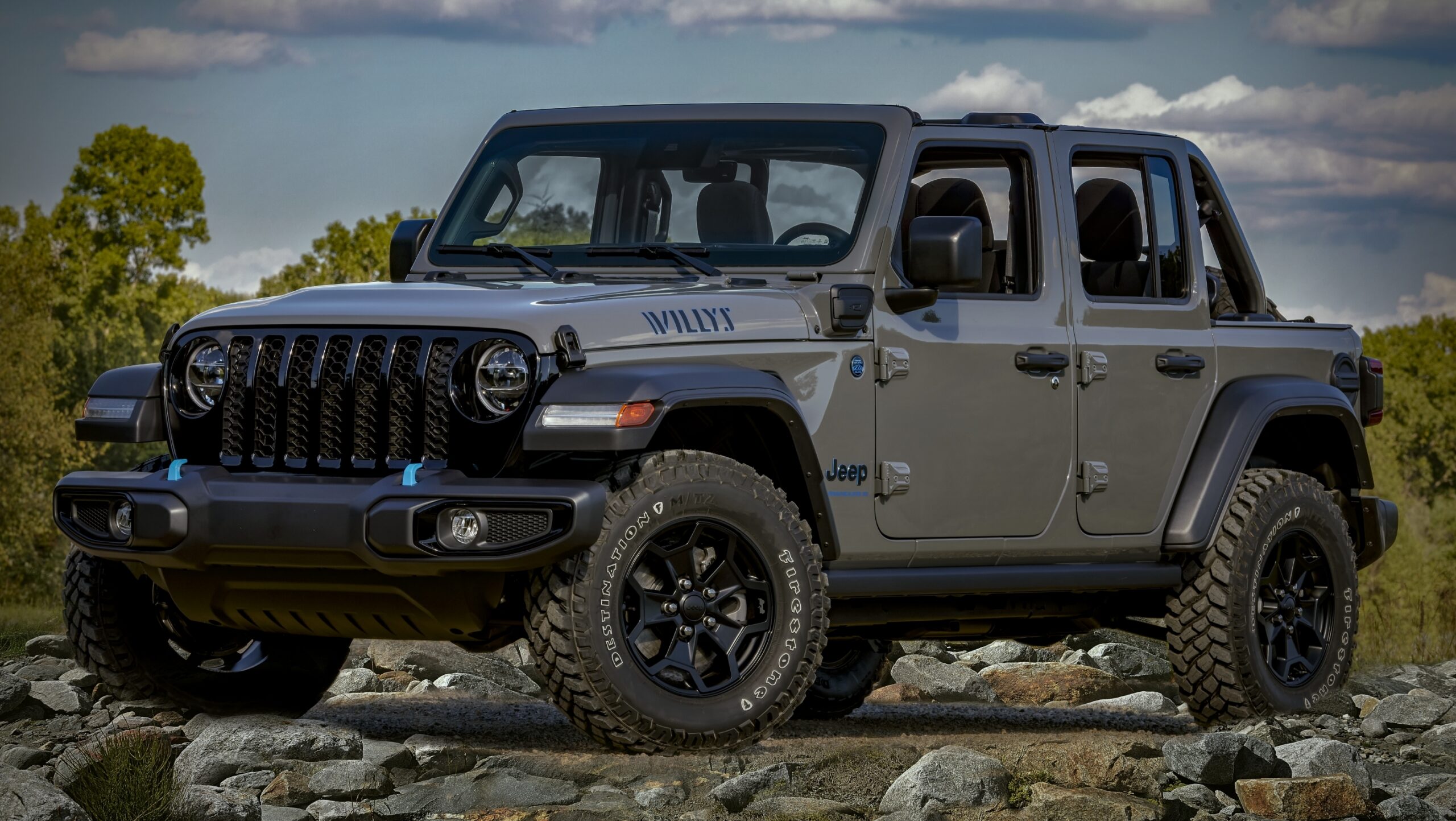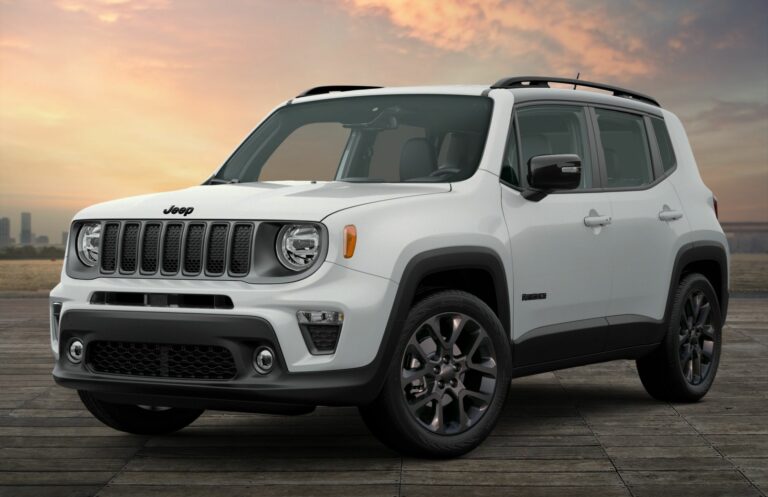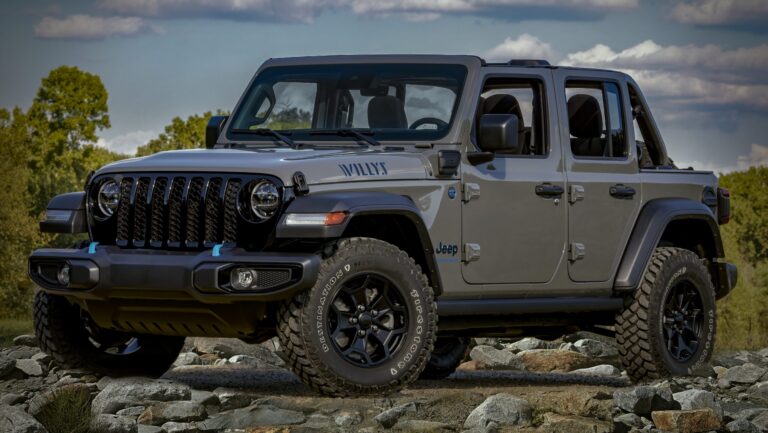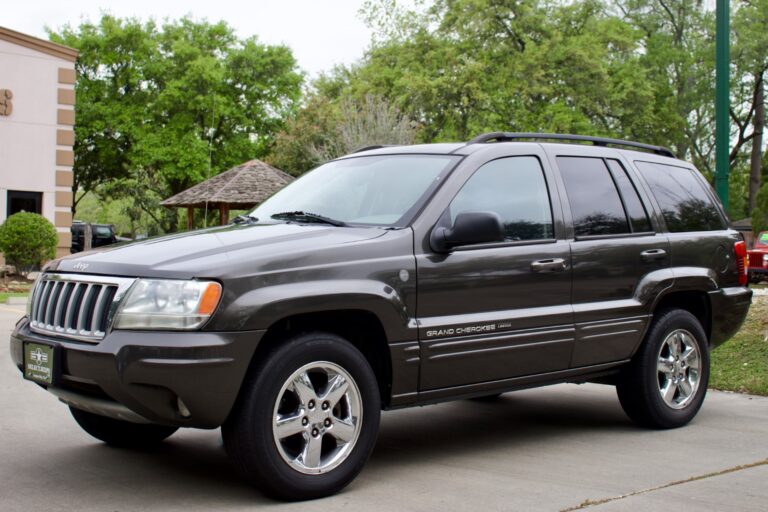Jeep Wrangler Vs Ford Bronco: The Ultimate Off-Road Showdown
Jeep Wrangler Vs Ford Bronco: The Ultimate Off-Road Showdown jeeps.truckstrend.com
In the rugged world of off-road vehicles, two titans stand tall: the venerable Jeep Wrangler and the audacious Ford Bronco. For decades, the Wrangler reigned supreme as the undisputed king of the trails, a symbol of adventure and unyielding capability. Then, after a long hiatus, the Ford Bronco burst back onto the scene, not merely as a competitor but as a formidable challenger, ready to carve its own legend. This rivalry isn’t just about sales figures; it’s a passionate debate among enthusiasts, a clash of heritage versus innovation, and a choice between two distinct philosophies of adventure. For anyone seeking a vehicle that can conquer the concrete jungle by day and untamed wilderness by night, understanding the nuances between these two iconic machines is paramount. This comprehensive guide will dissect every aspect of the Jeep Wrangler and Ford Bronco, helping you navigate the decision between these two exceptional off-roaders.
A Legacy Forged vs. A Legend Reborn: A Brief History
Jeep Wrangler Vs Ford Bronco: The Ultimate Off-Road Showdown
The Jeep Wrangler boasts a lineage tracing directly back to the original Willys MB of World War II, a vehicle synonymous with resilience and capability. Over generations, it has evolved, refining its off-road prowess while retaining its iconic, utilitarian design and removable body panels. The Wrangler isn’t just a vehicle; it’s a cultural icon, a testament to enduring design and uncompromising function. Its evolution reflects a continuous commitment to the core principles of off-road freedom.
The Ford Bronco, on the other hand, made a dramatic return in 2021 after a 25-year absence. Its original run from 1966 to 1996 established it as a versatile SUV, beloved for its rugged utility and distinctive style. The modern Bronco is a masterful blend of retro aesthetics and cutting-edge technology, designed from the ground up to challenge the Wrangler’s dominance. It represents a fresh take on the classic adventure vehicle, aiming to redefine expectations for capability and modern convenience.
Design and Aesthetics: Form Meets Function
Both vehicles immediately communicate their purpose, yet with distinct visual languages. The Jeep Wrangler adheres to its classic, boxy silhouette. Its exposed hinges, flat fenders, and round headlights are instantly recognizable, projecting an image of rugged simplicity and purposeful design. Every line suggests capability and ease of modification. The modularity, with its readily removable doors, roof panels, and even the windshield, offers an unparalleled open-air experience.
The Ford Bronco presents a more refined, yet equally tough, aesthetic. It skillfully blends retro cues from its first generation with modern design elements, creating a look that is both nostalgic and contemporary. While also featuring removable doors and roof panels, the Bronco often boasts a slightly more integrated and less industrial appearance. Its wider stance and distinctive grille give it a powerful, assertive presence. For those who appreciate a blend of classic charm and modern polish, the Bronco offers a compelling alternative.
Off-Road Prowess: Where the Rubber Meets the Trail
This is where the true battle lies, and both vehicles are exceptionally capable.
The Jeep Wrangler maintains its legendary status through its proven solid front and rear axles, which provide excellent articulation over uneven terrain and robust durability. The Rubicon trim, in particular, is an off-road beast, equipped with electronic disconnecting front sway bars, locking front and rear differentials, and a low-range transfer case (4:1 crawl ratio). Its compact dimensions (especially the two-door) allow it to navigate tight trails with ease. The extensive aftermarket support means there’s virtually no limit to how much you can enhance its off-road capabilities.
![]()
The Ford Bronco enters the arena with an independent front suspension (IFS), which typically offers better on-road comfort and handling. However, Ford has engineered the Bronco’s IFS to be highly capable off-road, providing impressive ground clearance and wheel travel. Key off-road features include the available Sasquatch package (35-inch tires, beadlock-capable wheels, lifted suspension), G.O.A.T. (Goes Over Any Type of Terrain) modes, and an available semi-active disconnecting sway bar on the Badlands trim. Its wider track often translates to greater stability on challenging inclines and declines.
Key Off-Road Metrics Comparison (Varies by Trim/Package):
| Feature | Jeep Wrangler (Rubicon/392) | Ford Bronco (Badlands/Sasquatch/Raptor) |
|---|---|---|
| Approach Angle | Up to 47.4 degrees | Up to 47.2 degrees |
| Departure Angle | Up to 40.4 degrees | Up to 40.5 degrees |
| Breakover Angle | Up to 27.8 degrees | Up to 29.0 degrees |
| Ground Clearance | Up to 12.9 inches (392) | Up to 13.1 inches (Raptor) |
| Water Fording | Up to 34 inches | Up to 37 inches |
| Front Suspension | Solid Axle | Independent Front Suspension (IFS) |
| Rear Suspension | Solid Axle | Solid Axle |
| Locking Diffs | Front & Rear (Rubicon, 392, some 4xe) | Front & Rear (select trims) |
| Sway Bar Disconnect | Electronic (Rubicon, 392, some 4xe) | Electronic (Badlands, Raptor) |
While the Wrangler’s solid axles often give it an edge in articulation and extreme rock crawling scenarios, the Bronco’s IFS provides a more controlled and comfortable ride on faster, less technical trails and delivers excellent stability. Both vehicles offer robust underbody protection and advanced traction management systems.
On-Road Dynamics: The Daily Commute
Off-road prowess often comes with compromises on pavement. The Jeep Wrangler, with its solid axles and recirculating-ball steering, has historically been known for a somewhat less refined on-road experience. It can feel a bit floaty, and steering requires more input. However, modern Wranglers, particularly the JL generation, have significantly improved in this regard, offering a more stable and comfortable ride than their predecessors. Still, it remains a vehicle designed primarily for off-road.
The Ford Bronco, thanks to its independent front suspension, generally offers a more composed and car-like ride on paved roads. Its steering is often perceived as more precise, and the ride quality is smoother, making it a more comfortable daily driver for many. This distinction is a significant factor for buyers who will spend the majority of their time on asphalt.
Interior and Technology: Comfort and Connectivity
The interiors of both vehicles reflect their brand philosophies. The Jeep Wrangler maintains a rugged, utilitarian interior design. While it has become more refined over the years, with comfortable seats and improved materials, it still feels built to withstand dirt, mud, and the elements. The Uconnect infotainment system is user-friendly and responsive, with available larger screens. Buttons and controls are often chunky and easy to operate even with gloves on.
The Ford Bronco offers a more modern and somewhat premium cabin experience. Its design incorporates more contemporary lines, higher-quality materials (especially in higher trims), and larger digital displays. The SYNC 4 infotainment system is intuitive, responsive, and offers wireless Apple CarPlay and Android Auto. Ford also integrated thoughtful features like drain plugs in the floor and marine-grade vinyl seating for easy cleaning, mirroring the Wrangler’s wash-out capabilities. The Bronco’s integrated accessory mounts and pre-wired auxiliary switches are a boon for customization.
Powertrain Options: Powering Your Adventure
Both vehicles offer a diverse range of engines to suit different needs.
Jeep Wrangler:
- 3.6L Pentastar V6: 285 hp, 260 lb-ft torque. The classic, reliable workhorse. Available with 6-speed manual or 8-speed automatic.
- 2.0L Turbo I4: 270 hp, 295 lb-ft torque. More torque, earlier in the RPM band, often better fuel economy. Only with 8-speed automatic.
- 2.0L Turbo I4 PHEV (4xe): 375 hp, 470 lb-ft torque. Combines electric and gas power for impressive torque, good fuel economy, and silent electric off-roading.
- 6.4L HEMI V8 (Rubicon 392): 470 hp, 470 lb-ft torque. Pure performance and sound, but at a premium price and fuel consumption.
Ford Bronco:
- 2.3L EcoBoost I4: 300 hp, 325 lb-ft torque. Strong, efficient, and available with a 7-speed manual transmission (including a crawler gear) or 10-speed automatic.
- 2.7L EcoBoost V6: 330 hp, 415 lb-ft torque. More power and torque, only with 10-speed automatic.
- 3.0L EcoBoost V6 (Bronco Raptor): 418 hp, 440 lb-ft torque. High-performance engine for the desert-runner variant.
The Wrangler offers a broader range of engines, including a plug-in hybrid and a potent V8, catering to specific desires for efficiency or brute force. The Bronco’s EcoBoost engines are highly capable, and the availability of a manual transmission on the 2.3L is a significant draw for purists.
Modularity and Customization: Personalizing Your Ride
Both vehicles are designed with customization in mind, leading to vibrant aftermarket communities. The Jeep Wrangler has an unparalleled aftermarket, with decades of parts availability and a vast ecosystem of accessories. Its design inherently supports modification, and owners routinely swap out bumpers, winches, lift kits, and more. Removing the doors and roof is a straightforward process, albeit sometimes requiring tools.
The Ford Bronco was engineered with modularity as a core principle. Its frameless doors are designed to be lighter and easier to remove (and store in the vehicle’s cargo area, depending on the trim). The roof panels are often quicker to detach, and many exterior components (like fenders) are easily replaceable. Ford also offers a wide range of factory-backed accessories and integrated mounting points for lights, racks, and other gear, making customization easier for the average owner.
Safety Features: Protecting Your Expedition
While neither vehicle is a top safety pick in the traditional sense (due to their unique body-on-frame, removable panel designs), both have made strides in incorporating modern safety technologies. Both offer features like blind-spot monitoring, adaptive cruise control, forward collision warning, and rear cross-traffic alert. It’s important to remember that their primary design is for rugged off-road use, which sometimes means sacrificing some of the passive safety benefits found in unibody SUVs. Always check the latest crash test ratings from NHTSA and IIHS for the specific model year you are considering.
Price and Value: Your Investment in Adventure
The price range for both the Wrangler and Bronco is extensive, varying wildly based on trim level, engine choice, and added options. Generally, their starting prices are competitive, but higher-end trims and specialized versions (like the Wrangler Rubicon 392 or Bronco Raptor) can push prices well into luxury vehicle territory. Resale value for both is historically strong, reflecting their high demand and iconic status.
Price Table: Jeep Wrangler Vs Ford Bronco (Estimated 2024 Starting MSRP)
Please note: Prices are approximate starting MSRPs for the base configuration of each trim and can vary significantly based on options, packages, dealer markups, regional differences, and model year. This table is for comparative purposes only.
| Model / Trim | Body Style | Typical Starting MSRP (Approx.) | Key Features (Brief) |
|---|
The Ultimate Showdown: Navigating the Choice Between Jeep Wrangler and Ford Bronco
The automotive world has long recognized the Jeep Wrangler as the king of off-road adventure, an iconic vehicle with an almost mythical status. For decades, it stood virtually unrivaled in its unique blend of open-air freedom and trail-conquering capability. However, the landscape dramatically shifted with the reintroduction of the Ford Bronco. More than just a new contender, the Bronco arrived with a clear intention to challenge the Wrangler’s reign, igniting a fierce rivalry that has captivated enthusiasts and casual drivers alike.
This isn’t merely a competition of sales figures; it’s a profound debate among dedicated communities, a fascinating clash between established heritage and innovative resurgence. It represents a choice between two distinct philosophies of adventure, both promising unparalleled freedom and rugged capability. For anyone contemplating a vehicle that can seamlessly transition from the daily commute to extreme off-road escapades, understanding the intricate differences and unique strengths of the Jeep Wrangler and Ford Bronco is absolutely essential. This article serves as a comprehensive guide, meticulously dissecting every facet of these two extraordinary machines to help you make the most informed decision.
I. A Storied Past Meets a Bold Comeback: Heritage and Evolution
The Jeep Wrangler carries a legacy that is arguably unmatched in the automotive world. Its roots trace directly back to the legendary Willys MB of World War II, a vehicle that became synonymous with resilience, adaptability, and unwavering capability in the face of adversity. Through successive generations – from the CJ series to the YJ, TJ, JK, and the current JL – the Wrangler has consistently evolved, refining its unparalleled off-road prowess while meticulously preserving its instantly recognizable, utilitarian design. This includes its signature round headlights, seven-slot grille, and readily removable body panels. The Wrangler is more than just a mode of transport; it is a profound cultural icon, a testament to enduring design principles and an uncompromising commitment to functional excellence. Its continuous evolution underscores a deep-seated dedication to the core tenets of off-road freedom and rugged individuality.
In stark contrast, the Ford Bronco made a triumphant and highly anticipated return to the market in 2021 after a quarter-century absence. Its original production run, spanning from 1966 to 1996, established it as a versatile and beloved SUV, celebrated for its robust utility and distinctive styling. The modern iteration of the Bronco is a masterclass in design, seamlessly blending nostalgic retro aesthetics with cutting-edge technology. It was meticulously engineered from the ground up not merely to compete, but to directly challenge the Wrangler’s long-held dominance. The Bronco aims to redefine expectations for capability, versatility, and modern convenience in the adventure vehicle segment. It represents a fresh, contemporary interpretation of the classic adventure vehicle, offering a compelling alternative to the Wrangler’s time-honored formula.
II. Design and Aesthetics: Form Meets Function with Distinct Personalities
Both the Wrangler and the Bronco unequivocally communicate their primary purpose through their visual identities, yet they do so with remarkably distinct design languages. The Jeep Wrangler steadfastly adheres to its timeless, boxy silhouette. Its exposed door hinges, flat, robust fenders, and iconic round headlights are immediately recognizable, projecting an image of rugged simplicity and unapologetic utilitarian design. Every design element of the Wrangler suggests inherent capability and an intuitive ease of modification. Its unparalleled modularity, which includes readily removable doors, roof panels, and even a fold-down windshield, delivers an open-air experience that remains unmatched in its raw authenticity.
The Ford Bronco, while equally tough and capable, presents a more refined and contemporary aesthetic. It masterfully blends distinctive retro design cues from its first generation with modern engineering and stylistic elements, resulting in a look that is simultaneously nostalgic and forward-thinking. While the Bronco also features removable doors and roof panels, its design often appears more integrated and less industrial than the Wrangler’s. Its characteristically wider stance and assertive grille imbue it with a powerful and confident road presence. For consumers who appreciate a harmonious blend of classic charm, modern polish, and advanced functionality, the Bronco offers a highly compelling and visually appealing alternative.
III. Off-Road Prowess: Where the Rubber Meets the Trail
This domain is the ultimate proving ground for both vehicles, and it is here that their exceptional capabilities truly shine.
The Jeep Wrangler maintains its legendary status primarily through its time-tested solid front and rear axles. These provide superior articulation over extremely uneven terrain and offer robust durability under punishing conditions. The Rubicon trim, in particular, is engineered as an off-road beast, featuring electronic disconnecting front sway bars (for maximum wheel articulation), locking front and rear differentials (for ultimate traction), and a low-range transfer case with an impressive 4:1 crawl ratio (for slow, precise control). The Wrangler’s inherently compact dimensions (especially the two-door model) allow it to navigate exceptionally tight and technical trails with surprising agility. Furthermore, the unparalleled depth of its aftermarket support means there is virtually no limit to how extensively you can customize and enhance its off-road capabilities.
The Ford Bronco enters this arena equipped with an independent front suspension (IFS), a design choice that typically translates to superior on-road comfort and handling. However, Ford has meticulously engineered the Bronco’s IFS to deliver exceptional off-road performance, providing impressive ground clearance and generous wheel travel. Key off-road enhancements include the highly popular Sasquatch package (featuring large 35-inch tires, beadlock-capable wheels, and a lifted suspension), multiple G.O.A.T. (Goes Over Any Type of Terrain) modes that optimize vehicle settings for various surfaces, and an available semi-active disconnecting sway bar on the Badlands trim. The Bronco’s wider track often contributes to enhanced stability, particularly on challenging inclines and declines.
Key Off-Road Metrics Comparison (Varies by Trim/Package for Maximum Capability):
| Feature | Jeep Wrangler (Rubicon/392) | Ford Bronco (Badlands/Sasquatch/Raptor) |
|---|---|---|
| Approach Angle | Up to 47.4 degrees | Up to 47.2 degrees |
| Departure Angle | Up to 40.4 degrees | Up to 40.5 degrees |
| Breakover Angle | Up to 27.8 degrees | Up to 29.0 degrees |
| Ground Clearance | Up to 12.9 inches (392) | Up to 13.1 inches (Raptor) |
| Water Fording | Up to 34 inches | Up to 37 inches |
| Front Suspension | Solid Axle | Independent Front Suspension (IFS) |
| Rear Suspension | Solid Axle | Solid Axle |
| Locking Diffs | Front & Rear (Rubicon, 392, some 4xe) | Front & Rear (select trims) |
| Sway Bar Disconnect | Electronic (Rubicon, 392, some 4xe) | Electronic (Badlands, Raptor) |
While the Wrangler’s solid axles often provide a distinct advantage in terms of raw articulation and extreme rock crawling scenarios, the Bronco’s IFS delivers a more controlled, comfortable, and stable ride on faster, less technical trails. Both vehicles offer robust underbody protection, advanced traction management systems








